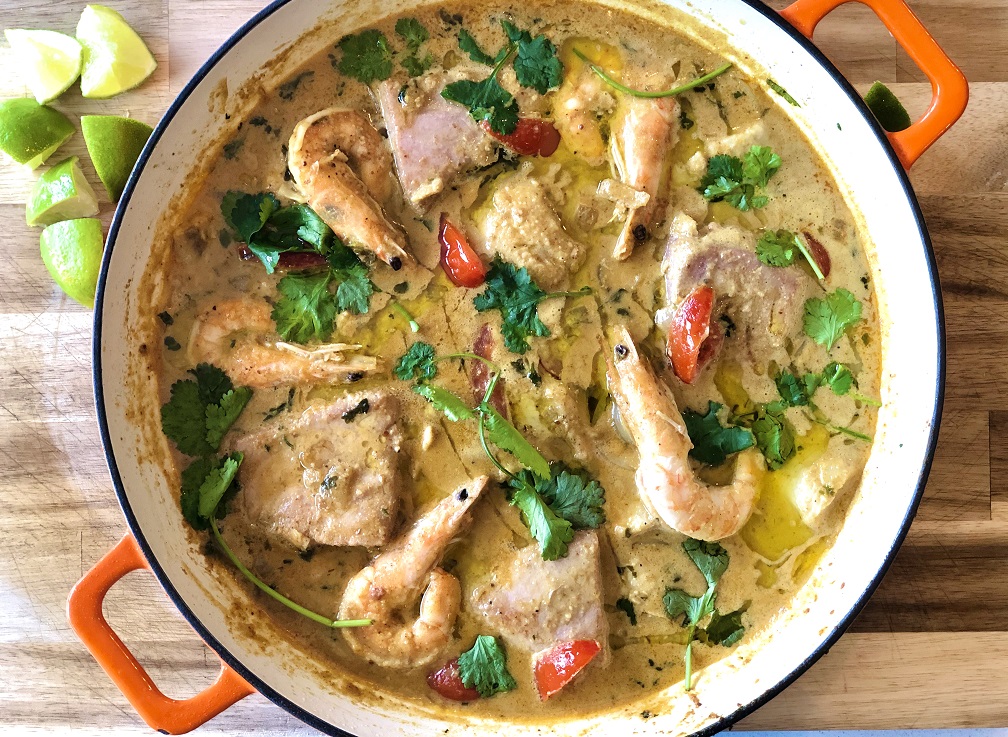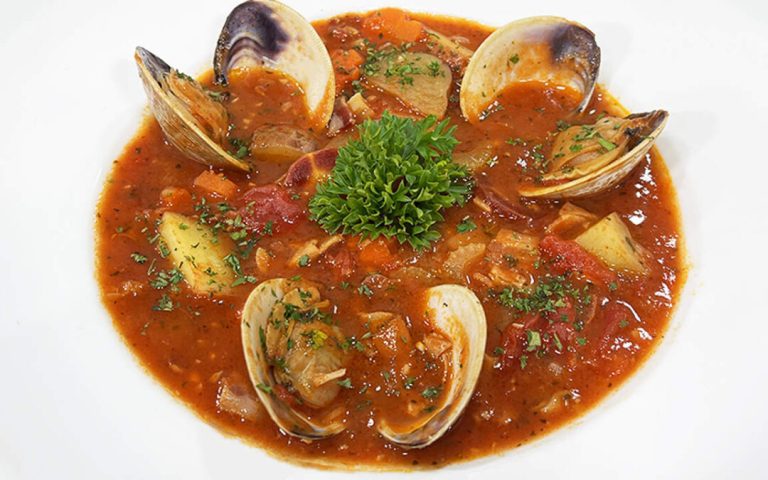Goan Fish Curry: A Flavorful Journey Through Goa’s Culinary Heritage
Goan Fish Curry traces its origins to the coastal state of Goa, India. Portuguese colonial influence, combined with indigenous culinary practices, crafted its unique profile. The dish merges local ingredients like coconut, tamarind, and various spices with Portuguese techniques. Fish, a staple in Goan cuisine, anchors the curry, reflecting the region’s deep connection to the sea. This fusion highlights Goa’s rich cultural tapestry, celebrating its historical influences and natural abundance.
Evolution Over Time
Over centuries, Goan Fish Curry has evolved, incorporating new ingredients and methods. Initially, traditional spices like coriander, cumin, and turmeric dominated. Later, the inclusion of Kashmiri chili and vinegar added further depth. Today’s versions often feature a mix of traditional and modern elements, catering to diverse palates. Despite changes, the essence of the curry—its vibrant flavors and rich aroma—remains consistent, preserving its cherished status in Goan cuisine.
Key Ingredients in Goan Fish Curry
Types of Fish Used
Goan Fish Curry primarily uses fresh, locally-sourced fish. Kingfish, mackerel, pomfret, and sardines often feature in this dish. These fish types absorb the curry’s flavors effectively, providing a rich taste. Kingfish, known for its firm texture and flavor, enhances the curry’s robustness. Mackerel, with its oily texture, adds depth to the dish. Pomfret and sardines bring a unique taste that complements the curry’s spices perfectly.
Spices and Condiments
Spices and condiments play a pivotal role in Goan Fish Curry. Red Kashmiri chilies, turmeric, coriander seeds, and cumin form the spice base. Red Kashmiri chilies give the curry its distinctive red color without adding excessive heat. Turmeric imparts a golden hue and earthy flavor. Coriander seeds add a subtle sweetness, while cumin provides a warm, nutty taste.
Condiments include tamarind, vinegar, and coconut milk. Tamarind adds tanginess, balancing the spices. Vinegar, introduced during Portuguese colonial times, enhances the curry’s sharpness. Coconut milk gives the curry its creamy texture and mellows the heat from the chilies. Combining these spices and condiments creates the signature flavor of Goan Fish Curry.
Cooking Techniques
Traditional Methods
Goan Fish Curry traditionally involves a meticulous process ensuring optimal flavor. Begin with marinating the fish in turmeric and salt for 15-20 minutes. This step infuses the fish with a base flavor and helps retain its texture. Next, prepare a masala paste using Kashmiri red chilies, coriander seeds, cumin, garlic, and fresh coconut. Grind these ingredients until smooth, adding a bit of water if necessary.
Heat coconut oil in a clay pot or heavy-bottomed pan, adding chopped onions once the oil is hot. Sauté until onions turn golden brown. Add the masala paste and cook for 5-7 minutes, stirring continuously. Incorporate tamarind paste and coconut milk, bringing the mixture to a gentle simmer.
Add the marinated fish pieces and cook for 10-15 minutes, ensuring the fish is tender but not overcooked. Garnish with fresh coriander leaves before serving. Each step in the traditional method highlights the importance of freshness and careful preparation in Goan cuisine.
Modern Adaptations
Modern adaptations streamline the traditional process without sacrificing flavor. Utilize pre-prepared spice mixes and canned coconut milk to save time. Start by marinating the fish similarly, but opt for a smoother, quicker-to-prepare masala paste by using a blender rather than a mortar and pestle.
Heat vegetable oil if coconut oil isn’t available. Sauté onions as in the traditional method, then add the blended masala paste. Instead of tamarind paste, consider using tamarind concentrate for ease. Add canned coconut milk directly, bringing the mixture to a simmer.
Introduce the marinated fish and cook for 8-10 minutes. Busy cooks might use quick-cooking fish like tilapia or basa. Garnish with cilantro if coriander leaves aren’t accessible. Modern adaptations focus on preserving the essence of Goan Fish Curry while accommodating contemporary kitchen conveniences.
Comparing Goan Fish Curry to Other Regional Dishes
Similarities with Other Indian Curries
Goan Fish Curry shares common traits with other Indian curries, particularly in the use of spices. Most Indian curries, including those from regions like Kerala, Tamil Nadu, and Bengal, employ a variety of spices such as turmeric, cumin, and coriander. These spices create complex layers of flavor. Additionally, coconut milk, a staple in southern Indian cuisine, appears in both Goan Fish Curry and Kerala’s Meen Moilee. This ingredient adds creaminess and balances the heat from the spices. Another similarity is the use of tamarind, which provides a tangy undertone, evident in both Goan and Andhra-style fish curries.
Unique Characteristics
Goan Fish Curry distinguishes itself through distinct features not commonly found in other regional dishes. One major difference is the inclusion of red Kashmiri chilies, which imbue the curry with a vibrant red color and mild heat. Unlike North Indian curries, Goan Fish Curry relies heavily on vinegar, a legacy of Portuguese influence, rather than yogurt or cream. Additionally, the blend of spices in Goan cuisine often includes fenugreek and mustard seeds, providing a unique flavor profile. The choice of fish, such as kingfish and pomfret, aligns with Goa’s coastal availability, differentiating it from inland curries that may feature river fish or even meat.
Serving and Pairing Ideas
Traditional Accompaniments
Serve Goan Fish Curry with plain steamed rice; it’s the classic choice and lets the curry’s flavors shine. Use Basmati or short-grain rice for an authentic touch. Consider pairing it with Goan Pao, a type of local bread if you’d like to try something different. The bread’s texture complements the curry well. Add a light salad with fresh cucumbers and tomatoes as a refreshing side. For a more filling meal, offer Sannas, fluffy white rice cakes, adding a mildly sweet note to balance the curry’s spice.
Beverage Pairings
Pair Goan Fish Curry with a crisp white wine for the best contrast. Sauvignon Blanc fits well due to its acidity, enhancing the curry’s flavors. A chilled lager or pilsner can also complement the dish, providing a refreshing counterpoint to the curry’s heat. For non-alcoholic options, serve coconut water for a traditional touch; its natural sweetness pairs beautifully. Fresh lime soda offers a tangy and refreshing alternative, cutting through the richness of the curry while keeping the palate refreshed.
Conclusion
Exploring Goan Fish Curry offers a delightful dive into the rich culinary heritage of Goa. The dish’s unique blend of spices and creamy coconut milk creates a symphony of flavors that’s both comforting and exotic. Whether you’re pairing it with traditional Goan sides or enjoying it with a refreshing beverage, each bite promises a taste of Goa’s vibrant culture. So, gather your ingredients and embark on this flavorful journey. Your taste buds will thank you.





